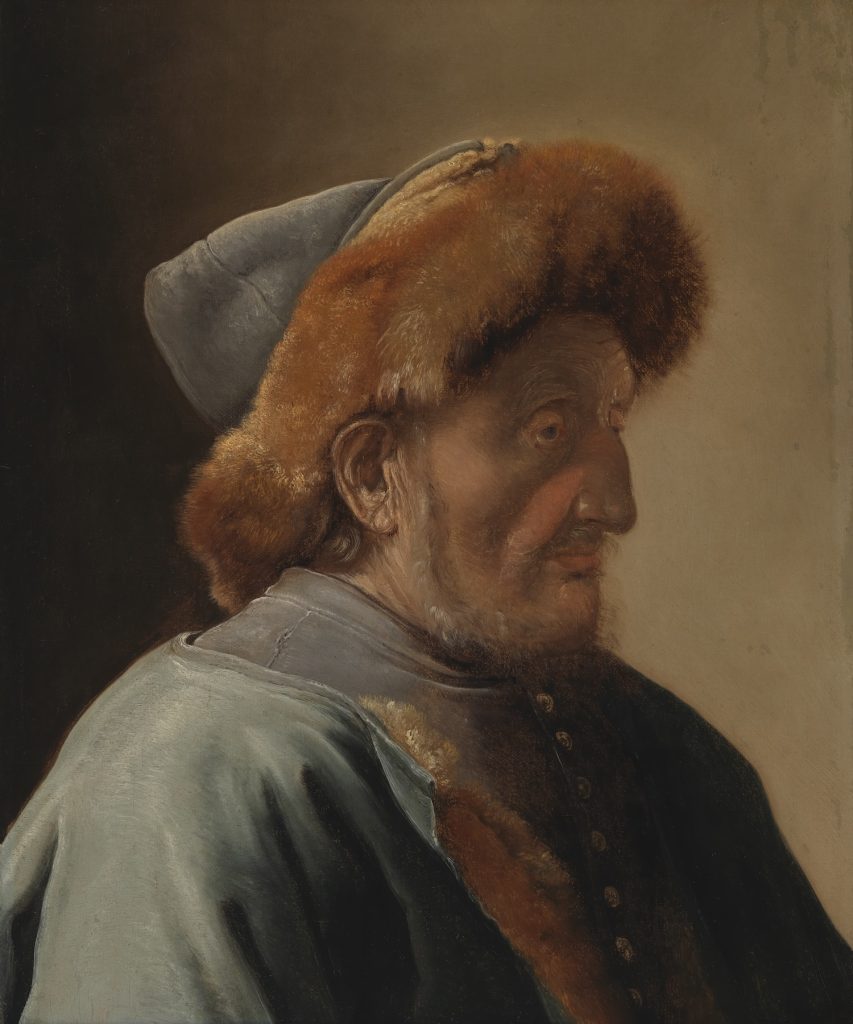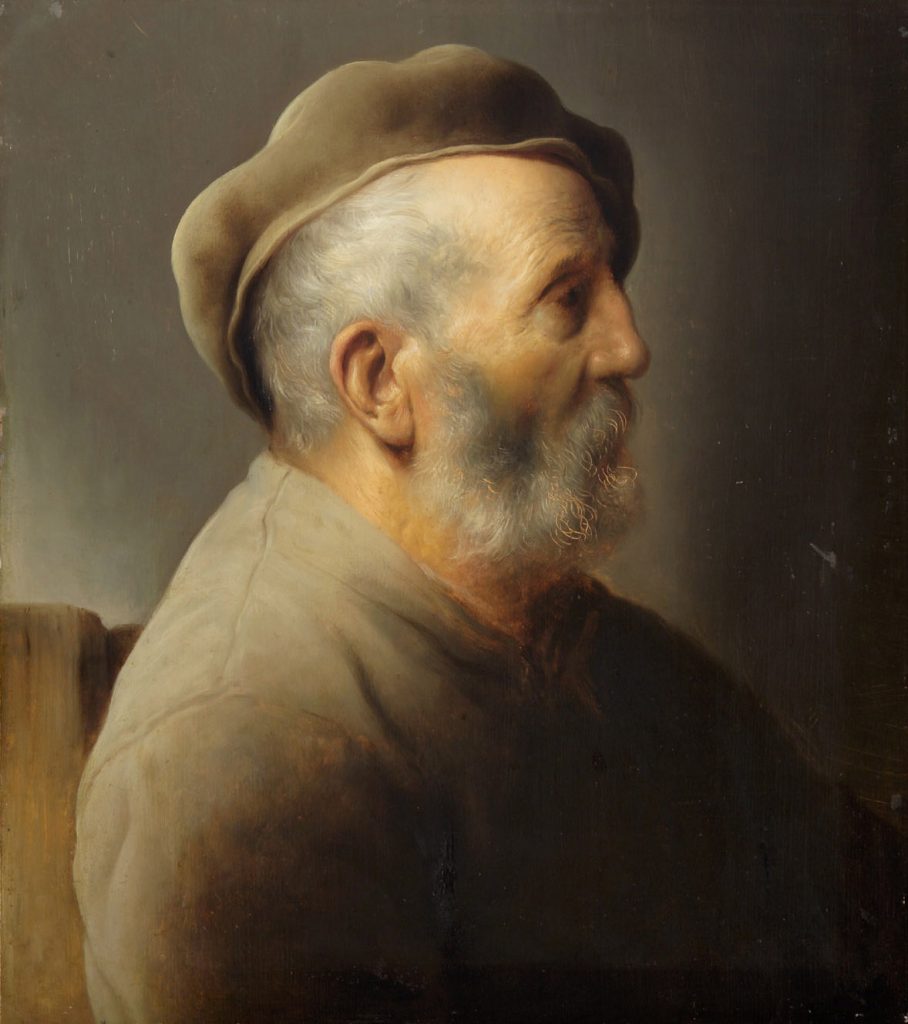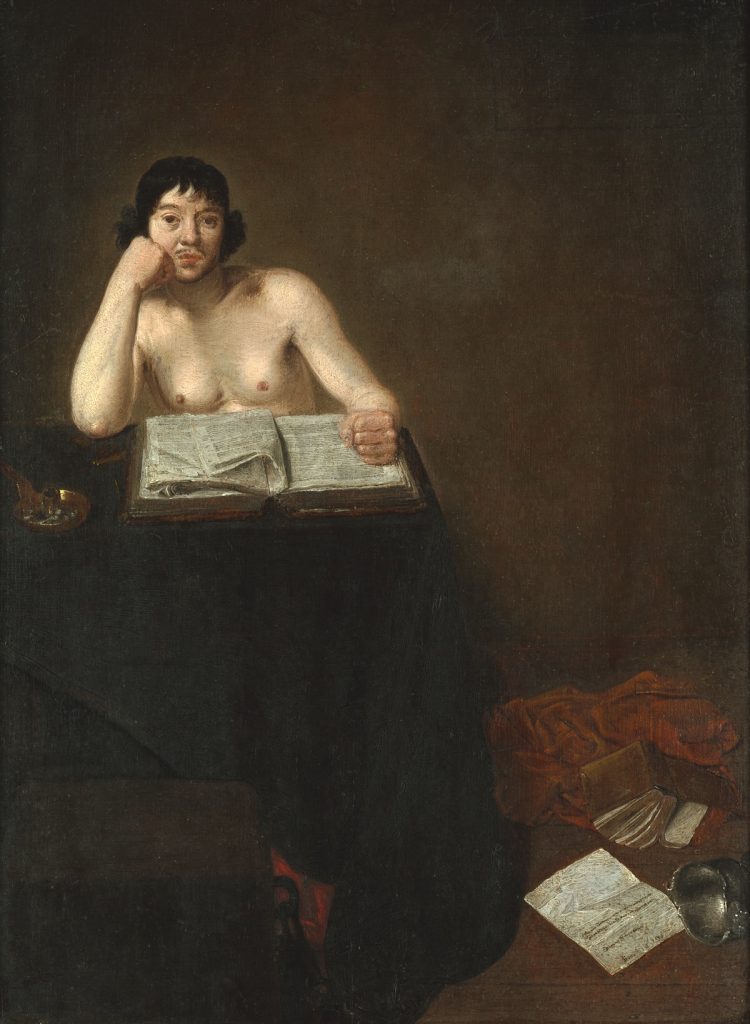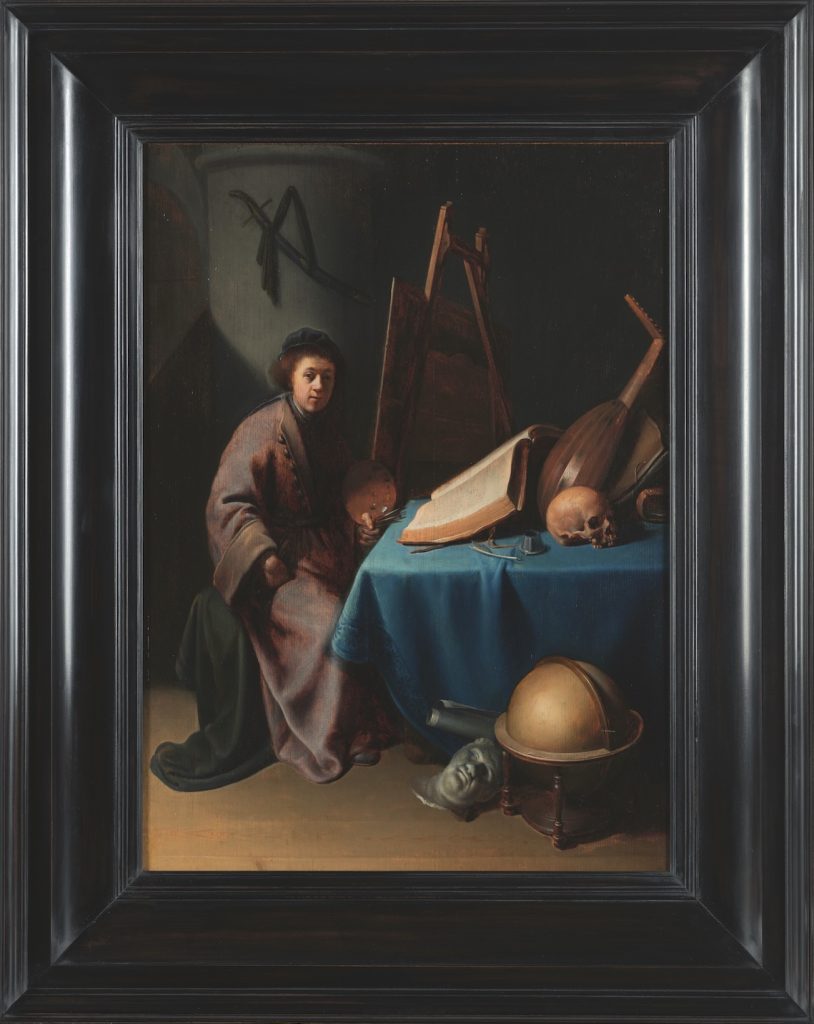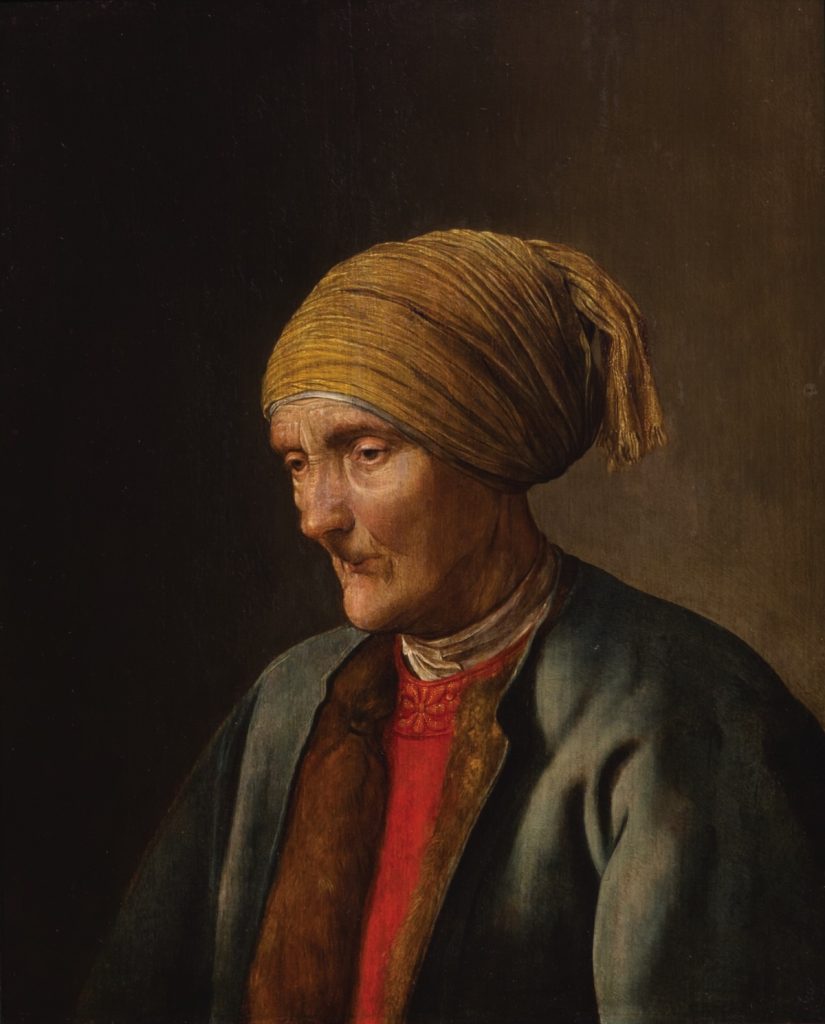
Cracking the Mystery of an Elusive Old Master
Gösta Serlachius acquired Old Man with a Fur Hat from a London auction in 1937. The painting was then attributed to the Dutch artist Jan Lievens (1607–1674), who was a contemporary of Rembrandt (1606–1669). It remained misattributed to Lievens for decades, despite a contrary theory proposed as early as the 1980s by the German art historian Werner Sumowski, who posited the real author to be an enigmatic master known only by his initials, ‘I.S.’ The artistic identity of the mysterious Monogrammist I.S. was first established by the art historian Theodor von Frimmel in 1904, but subsequent mentions of his oeuvre have been scant and sporadic. The elusive master has remained a marginal figure in art history, which largely explains why the painting was attributed to the better-known Jan Lievens at the London auction, and also why the misattribution was not corrected by later generations of art scholars.
The Master I.S. – Rembrandt’s Enigmatic Contemporary exhibition and research project had its inception in April 2022, when the abovementioned painting’s misattribution was raised in discussions at the first edition of the Serlachius Seminar. Marking the first-ever exhibition devoted solely to the oeuvre of Master I.S, this major project has offered the Gösta Serlachius Fine Arts Foundation an ideal opportunity to advance its goal of increasing international awareness of its Old European art collection. Our Dutch partner in the project is the Museum De Lakenhal in Leiden, a city that holds special relevance in relation to Master I.S’s oeuvre. Our international research partners are Lakenhal’s Curator of Old Masters, Janneke van Asperen, Professors Volker Manuth and Marieke de Winkel, and David de Witt, Senior Curator at the Museum Rembrandthuis in Amsterdam.
The trail leads to Leiden
Leiden in the west of the Netherlands became established as a prominent art capital in the early 17th century. The textile industry brought prosperity to the city, which was Holland’s second most populous urban centre after Amsterdam in the 17th century. Leiden’s venerable artistic heritage dates back to the early 16th century, when Italian Renaissance influences were introduced to the Netherlands by Lucas van Leyden (1494-1533), an artist famous for his masterful paintings and engravings.
Although there were fewer artists based in Leiden than in Amsterdam or Haarlem, Leiden’s painters were unprecedently bold in pioneering new stylistic approaches, as epitomized in the first decades of the 17th century by the innovative work of Rembrandt, Jan Lievens and Gerrit Dou (1613-1675). Leiden’s painters were distinctive not only for introducing novel subject matter but also for experimenting with groundbreaking new techniques.
Rembrandt, Lievens and Dou devoted special attention to the vivid depiction of human physiognomy and emotional nuance. All three artists contributed to the development of the genre known as the tronie, which originally consisted of small-scale studies of facial features that artists used as exercises for larger history paintings or biblical illustrations. In the 1620s and 1630s, Rembrandt and Lievens transformed the tronie into an autonomous genre, using as their models either themselves, each other, or others from their social midst. Although tronies are not strictly portraits in the conventional sense, they came to be admired as sought-after collector items. Leiden’s young artists were intrigued especially by the time-worn faces of the elderly, presumably owing to the technical challenges of rendering wrinkled skin, combined with the thematic implications of time’s passage and the suggestion of mortality.
Master I.S.’s corpus of paintings is notable especially for its many detailed, meticulously executed studies of elderly people. If we compare Master I.S.’s Old Man with a Fur Hat with Jan Lievens’s strikingly similar early painting Old Man, we can appreciate how easily the master’s work came to be misattributed. A further interesting detail about Master I.S.’s oeuvre relates to costumes: the exotic array of garments worn by his sitters are far from typical of the Netherlands. Exotic costumes admittedly also appeared in character studies painted by Rembrandt and other Leiden artists, a good example being Rembrandt’s Bust of an Old Man with Turban.
A second genre favoured by Leiden artists was the artist or scholar portrayed in his studio. The motif appears frequently in the oeuvre of Gerrit Dou, Jan Davidsz. de Heem (1606-1683) and David Bailly (1584-1657). Paintings of scholars seated at desks piled with letters, skulls and other vanitas symbols also appear in the work of Master I.S., as exemplified by Young Scholar and Old Man Beside a Table with Books. In his early work, Master I.S. took considerable liberties reinterpreting this tradition, which comes to light revealingly if we compare Young Scholar Half-Naked(FIGURE 4) with Gerrit Dou’s more conventional Portrait of the Artist in his Studio.
The mystery remains unsolved
Scholars have speculated as to whether Master I.S. was a professional painter at all, or whether he was merely a gifted amateur who developed his consummate skills through years of painstaking practise. It is conceivable, moreover, that the master was not even Dutch but perhaps a visiting foreign scholar who came to study in Leiden. This theory is supported by the many depictions of young and old scholars that figure prominently in his oeuvre. Certain details in the costumes and interiors moreover suggest non-Dutch geographical origins.
The garments and headdresses in Master I.S.’s paintings represent a mixture of traditional attire from different regions of Europe. The fur collars appearing in many works suggest not the Netherlands, but the colder climates of northern and eastern Europe. Some headdresses point to Poland, others to Livonia (the latter-day region of southern Estonia and northern Latvia), and some to Sweden. Certain costume details in turn seem more like fanciful products of the artist’s imagination. A stylized floral motif adorns garments in several paintings, notably Old Woman in Three-Quarter Profile, Old Woman Reading a Letter and Two Scholars in a High Room. Scarcely would this identical motif have adorned such diverse items of attire, which suggests that the flower is not a truthful detail but a consistently applied artist’s ‘trademark’.
Did Master I.S. perhaps hail from the Baltic Sea region, or might he have travelled there on business? Master I.S. is known to have painted portraits of the Kerckrinck merchant family. Given as Holland’s extensive trading networks extended to the Baltic Sea, the artist’s links with the merchant family might offer a plausible explanation for the unusual attire and interiors that appear in his paintings.
Notwithstanding this possible Baltic connection, nothing can be said with absolute certainty – even about the artist’s gender. That said, some paintings are, by all indications, self-portraits, which makes it fair to surmise that the artist was male. Portrait of a Young Man with a Tall Fur Hat and Gorget is noticeably similar to many of Rembrandt’s self-portraits in exotic costume, lending evidence to suggest that this piece, too, is a self-portrait. A similar figure with long dark hair and a thin moustache also appears in other paintings by Master I.S., such as Young Scholar Half-Naked.
It is both rewarding and frustrating that we know virtually nothing about the elusive Master I.S. In the absence of biographical facts to guide our interpretations, we are free to let our imagination run wild. Still, without solid evidence, we cannot say anything definitive about the artist or his oeuvre; all we can do is present educated guesses, albeit informed ones corroborated by the content of the paintings. We may never finally establish the true identity of Master I.S., but this groundbreaking exhibition and research project will certainly raise new awareness around the artist and his oeuvre – and this in itself doubles the odds that future generations of scholars might eventually crack the mystery.
Tomi Moisio, PhD, curator
This article is based on contributions in the exhibition catalogue Master I.S. – Enigmatic contemporary of Rembrandt, written by Janneke van Asperen, Volker Manuth, Tomi Moisio and Marieke de Winkel.


